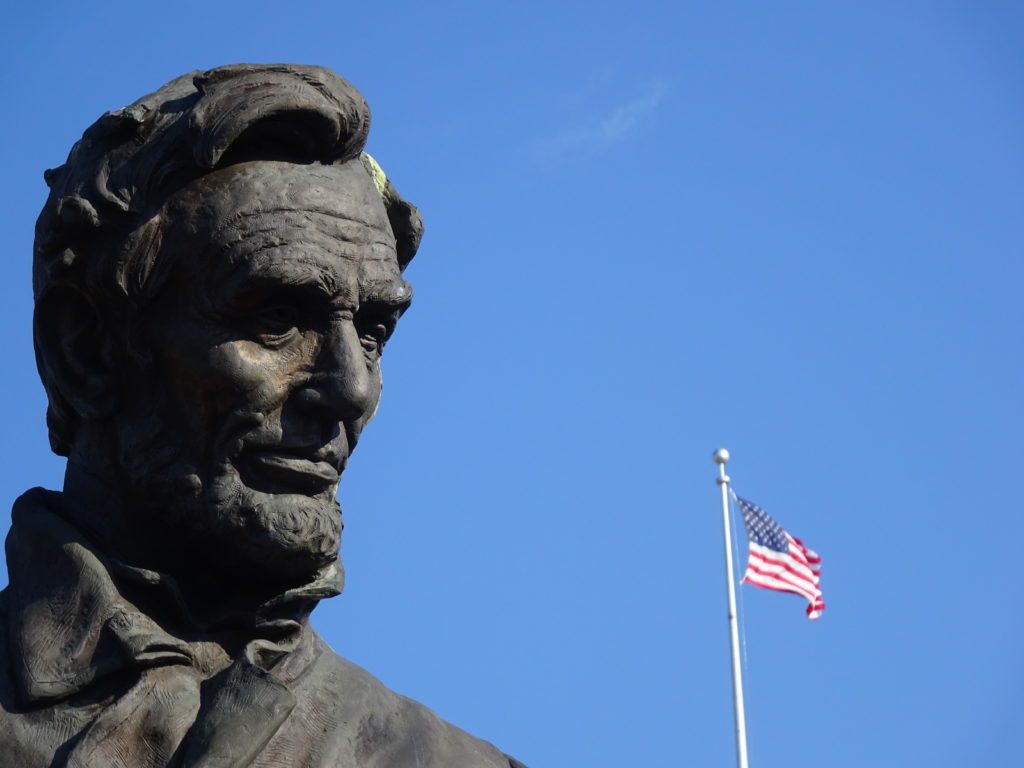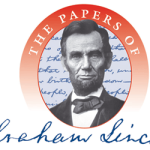Like all Presidents, Abraham Lincoln seemed to age decades during his four years in office. On my recent trip to Springfield, Illinois I got to see this close up. As you might expect, there are several statues of Lincoln around town, all of which have been photographed millions of times by the steady stream of tourists into this relatively small city.
I did the same, of course. But I also have a penchant for close ups. It was here that the aging process was brought home to me. Let’s start at the Lincoln-Herndon Law Offices, standing on the corner across the street from the Old State Capitol. Here we find a relatively younger Lincoln the lawyer and statesman with his family, his wife Mary straightening his tie as he prepares to give his 1854 anti-slavery speech. This is a close up:

A couple of blocks north you’ll find Union Square Park and, yes, more Lincoln statues. I liked the one of him standing strong against an unseen wind as he gives his first inaugural address. In this close up the flag atop the tower of Union Station highlights a now bearded Lincoln.

Now imagine how much older he looked after four years of war.
The statue sits across the street from the Abraham Lincoln Presidential Library and Museum. I spent two days inside the library doing research with the Papers of Abraham Lincoln project, skipping across the street only to see a special exhibit “Unfinished Work” temporarily showing in the museum. I’ll be coming back out to Springfield in September for a full-scale tour of Lincoln-related sites including New Salem, the Lincoln house, and tomb. Even though I’ve just returned, I can’t wait to go back.
David J. Kent has been a scientist for thirty-five years, is an avid science traveler, and an independent Abraham Lincoln historian. He is the author of Tesla: The Wizard of Electricity (now in its 5th printing) and two e-books: Nikola Tesla: Renewable Energy Ahead of Its Time and Abraham Lincoln and Nikola Tesla: Connected by Fate. His book on Thomas Edison is due in Barnes and Noble stores in July 2016.
Follow me by subscribing by email on the home page. And feel free to “Like” my Facebook author’s page and connect on LinkedIn. Share with your friends using the buttons below.




 The impetus for my impending visit was
The impetus for my impending visit was 






